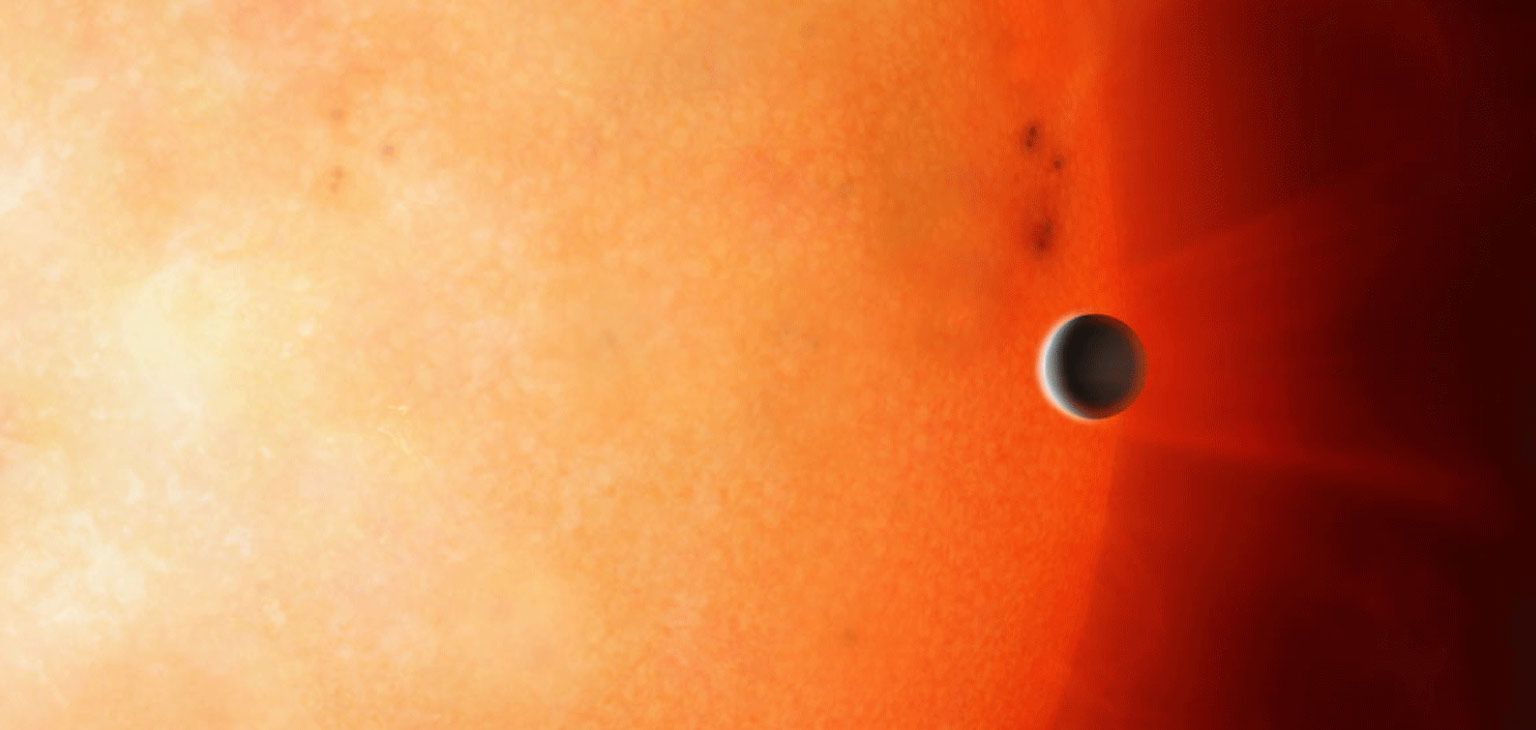The ‘Forbidden Planet’ has been found in the ‘Neptunian Desert’

An exoplanet smaller than Neptune with its own atmosphere has been discovered in the Neptunian Desert by an international collaboration of astronomers, including researchers from Queen’s.
The collaboration, led by the University of Warwick, discovered the rogue planet using the state-of-the-art Next-Generation Transit Survey (NGTS) observing facility. This survey finds new planets by looking for a periodic dip in the light of a star as an orbiting planet passes, or ‘transits’, in front of it.
NGTS is designed to search for transiting planets around bright stars, but NGTS-4b is so small other ground surveys wouldn’t have spotted it. Usually only dips of 1 per cent and more are picked up by ground-based searches, but the NGTS telescopes can pick up a dip of just 0.2 per cent.
NGTS is situated at the European Southern Observatory's Paranal Observatory in the heart of the Atacama Desert, Chile. It is a collaboration between UK Universities Queen's University Belfast; Warwick; Leicester; and Cambridge, together with Observatoire de Genève; DLR Berlin; and Universidad de Chile.
NGTS-4b, also nick-named ‘The Forbidden Planet’ by researchers, is a planet smaller than Neptune but three times the size of Earth.
It has a mass of 20 Earth masses, and a radius 20 per cent smaller than Neptune, and is 1000 degrees Celsius. It orbits around its host star in only 1.3 days – the equivalent of Earth’s orbit around the sun of one year.
It is the first exoplanet of its kind to have been found in the Neptunian Desert.
The Neptunian Desert is the region close to stars where no Neptune-sized planets are found. This area receives strong irradiation from the star, meaning the planets do not retain their gaseous atmosphere as they evaporate leaving just a rocky core. However, NGTS-4b still has its atmosphere of gas.
Researchers believe the planet may have moved into the Neptunian Desert recently, in the last one million years, or it was very big and the atmosphere is still evaporating.
Dr Chris Watson, from the Astrophysics Research Centre, School of Mathematics and Physics, Queen’s University Belfast, said: “This is just another example of how planets seem to be able to pop up in hostile places where we thought they should not be.
“Nature appears to be quite inventive with how it can form planets, and we have to be equally inventive in order to catch them – NGTS has been spectacular in this respect.”
Dr Richard West, from the Department of Physics at the University of Warwick, commented: “This planet must be tough - it is right in the zone where we expected Neptune-sized planets could not survive. It is truly remarkable that we found a transiting planet via a star dimming by less than 0.2 per cent - this has never been done before by telescopes on the ground, and it was great to find after working on this project for a year.
“We are now scouring out data to see if we can see any more planets in the Neptune Desert – perhaps the desert is greener than was once thought.”
Media inquiries to Jemma Greenlees at Queen’s University Communications Office T; +44 (0)28 9097 3087 E: j.greenlees@qub.ac.uk.
